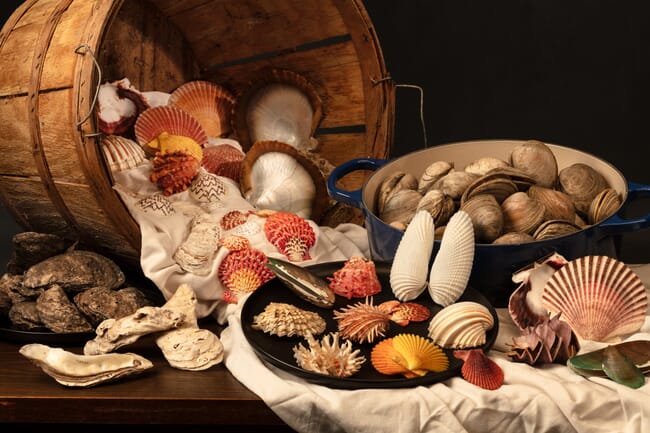
The new research has found that over 800 bivalve species are exploited by humans © Brittany M Hance and James D Tiller
In the study, scientists Stewart Edie of the Smithsonian, Shan Huang of the University of Birmingham and colleagues drastically expanded the list of bivalve species – such as clams, oysters, mussels, scallops and their relatives – that humans are known to harvest and identified the traits that make these species prime targets for harvesting.
They also discovered that some of these same traits have also made this group of shellfish less prone to extinction in the past and may protect these shellfish in the future. The authors flagged certain ocean regions, such as the east Atlantic and northeast and southeast Pacific, as areas of special concern for management and conservation.
The research, published this week in Nature Communications, finds that humans exploit some 801 species of bivalves - 720 more that are listed in the Food and Agriculture Organization of the United Nations’ Production Database.
Edie, who serves as the National Museum of Natural History’s curator of fossil bivalves, said that – luckily – many of the traits that make these bivalve species attractive to humans have also lowered their risk of extinction. Specifically, these species live in a range of climates all over the world, with a wide range of temperatures. This adaptability promotes resilience against natural drivers of extinction. But at the same time, human demand for these species can put them and the ecosystems they are part of at greater risk of destruction.
“We’re fortunate that the species we eat also tend to be more resistant to extinction,” said Edie. “But humans can transform the environment in the geologic blink of an eye, and we have to sustainably manage these species so they are available for generations that will come after us.”
“It is somewhat ironic that some of the traits that make bivalve species less vulnerable to extinction also make them far more attractive as a food source, being larger, and found in shallower waters in a wider geographical area,” said Huang. “The human effect, therefore, can disproportionately remove the strong species. By identifying these species and getting them recognised around the world, responsible fishing can diversify the species that are gathered and avoid making oysters the dodos of the sea.”
A history of bivalve exploitation
Bivalve molluscs have filtered water and have fed humans for millennia. In places like Estero Bay, Florida, the indigenous Calusa tribe sustainably harvested an estimated 18.6 billion oysters and constructed an entire island and 30-foot high mounds out of their shells.
But the history of humans harvesting bivalves is also rife with examples of overexploitation, largely by European colonisers and mechanised commercial fisheries, that led to collapses of oyster populations in locations including Chesapeake Bay, San Francisco Bay and Botany Bay, Australia.
After studying the scientific literature and realising that there was no comprehensive list of all the species known to be targeted by fisheries, Edie and his co-authors set off to document the array of bivalves utilised by humans.
After collating all the species they found mentioned in more than 100 prior studies, the researchers started investigating possible similarities and patterns among the 801 bivalves on the list. The team examined which traits make a bivalve exploitable by humans and how those traits relate to their risk of extinction.
The study found that humans tend to harvest bivalves that are large-bodied, occur in shallow waters, occupy a wide geographic area and survive in a large range of temperatures. Those final two traits also make most exploited bivalve species less susceptible to the kinds of extinction pressures and risks that have wiped out species from the fossil record in the ancient past.
The researchers hope their data improves conservation and management decisions in the future. Specifically, their list identifies regions and species as being particularly prone to extinction. In a similar vein, the list may help identify species that require further study to assess their current risk of extinction.
Next, Edie said he wants to use the traits associated with exploited bivalves to investigate the bivalve species that are not currently known to be harvested by people.
“We want to use what we learned from this study to identify any bivalves that are being harvested that we don’t already know about,” said Edie. “To manage bivalve populations effectively, we need to have a full picture of what species people are harvesting.”




